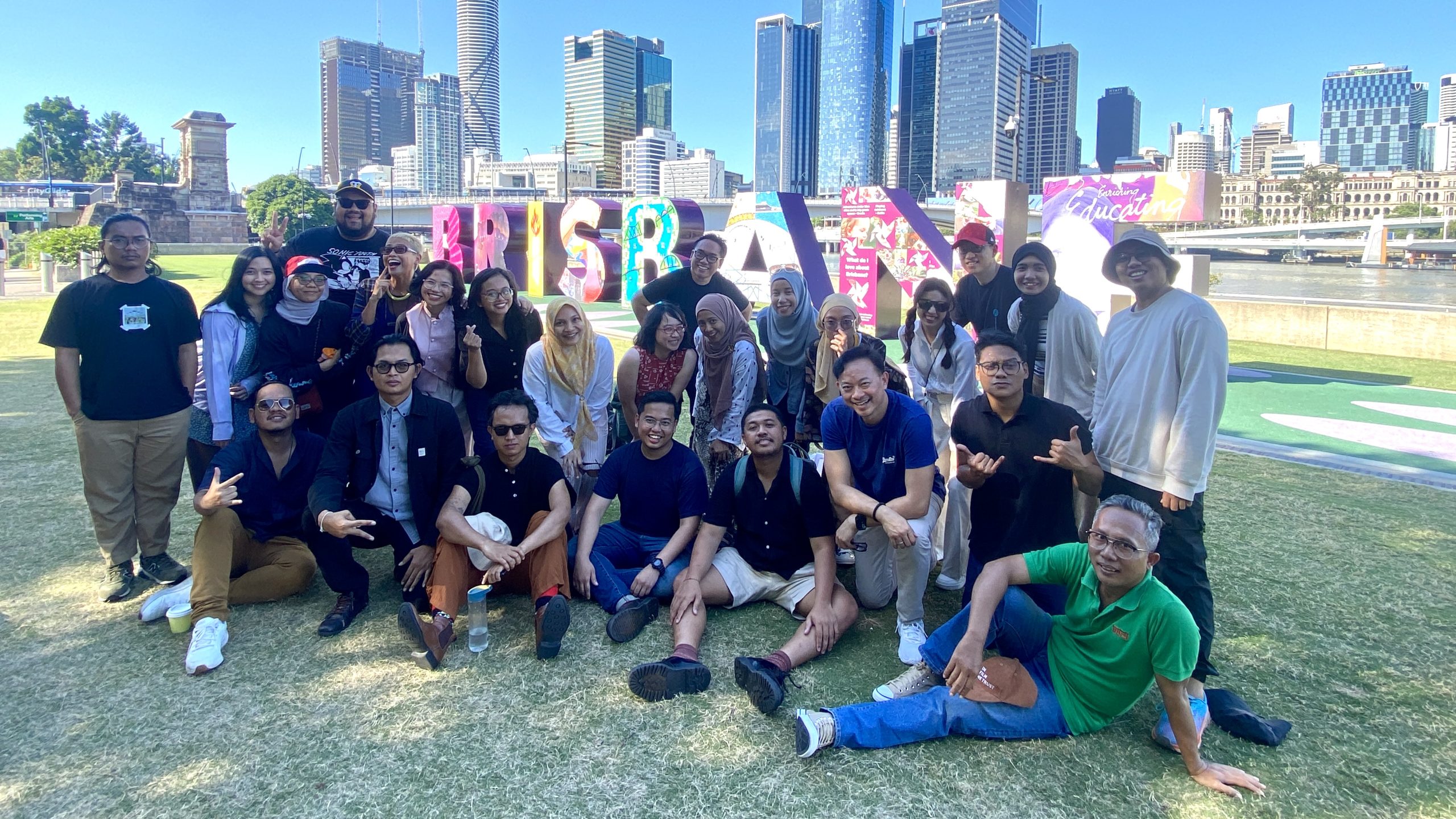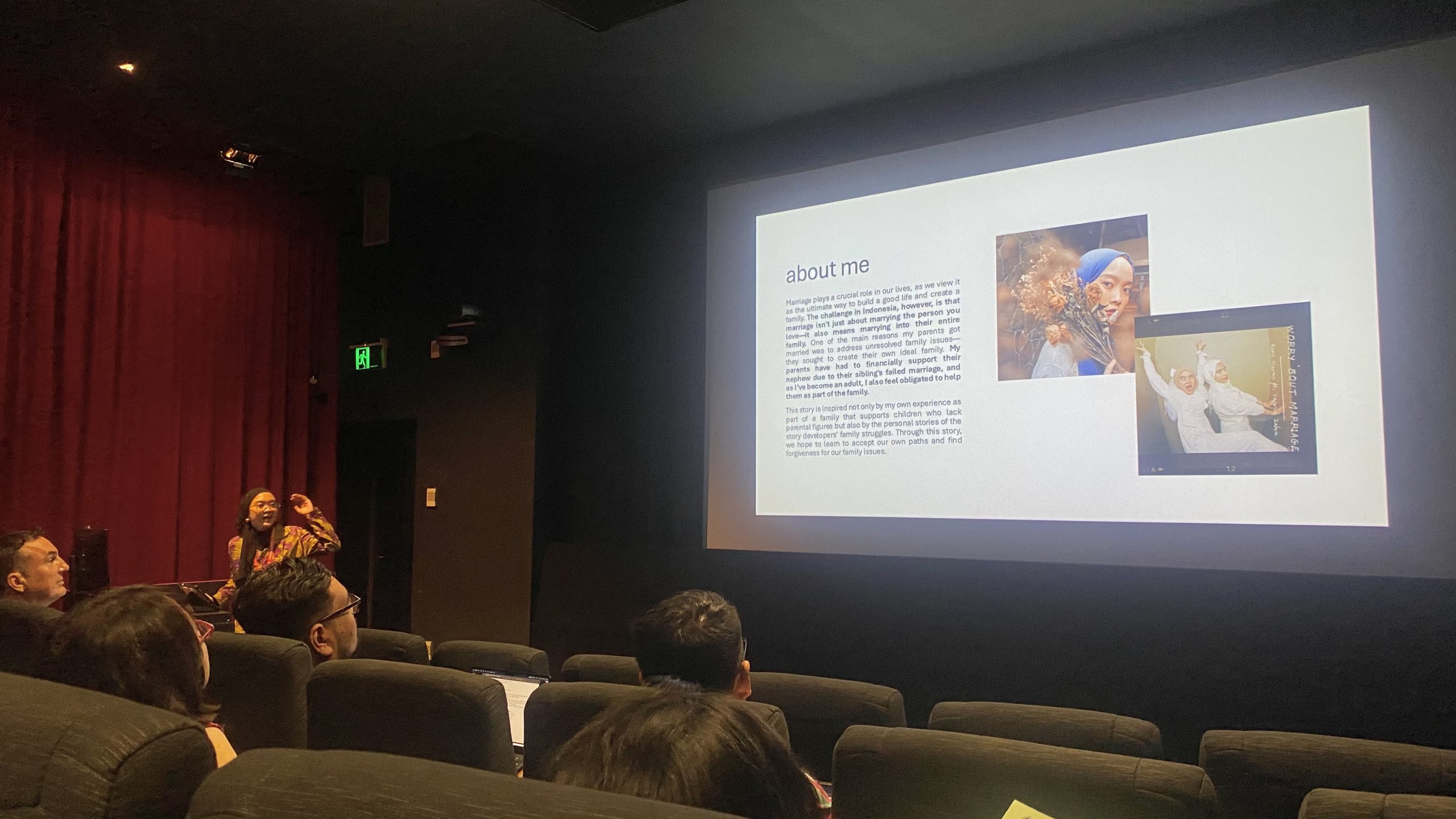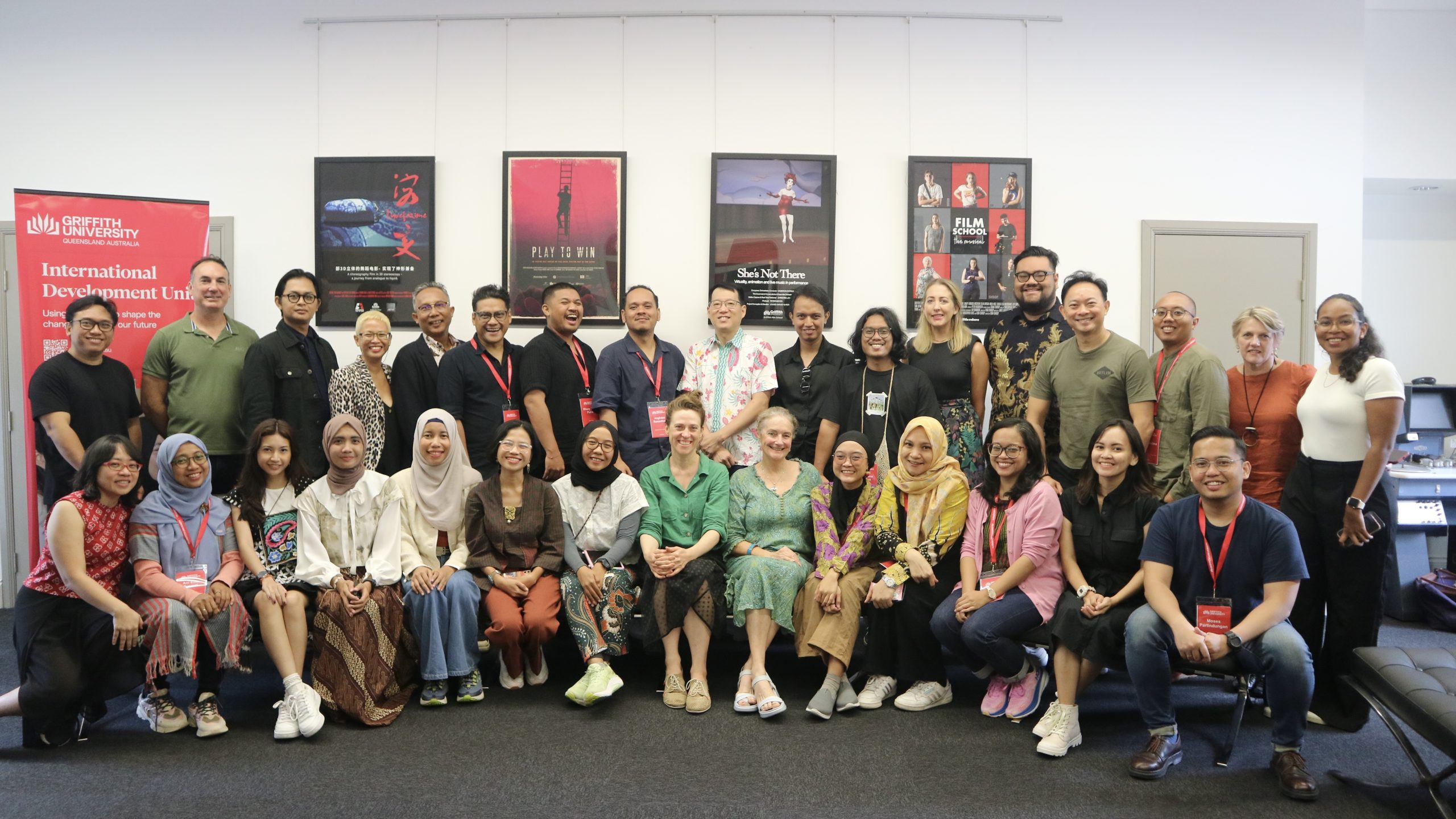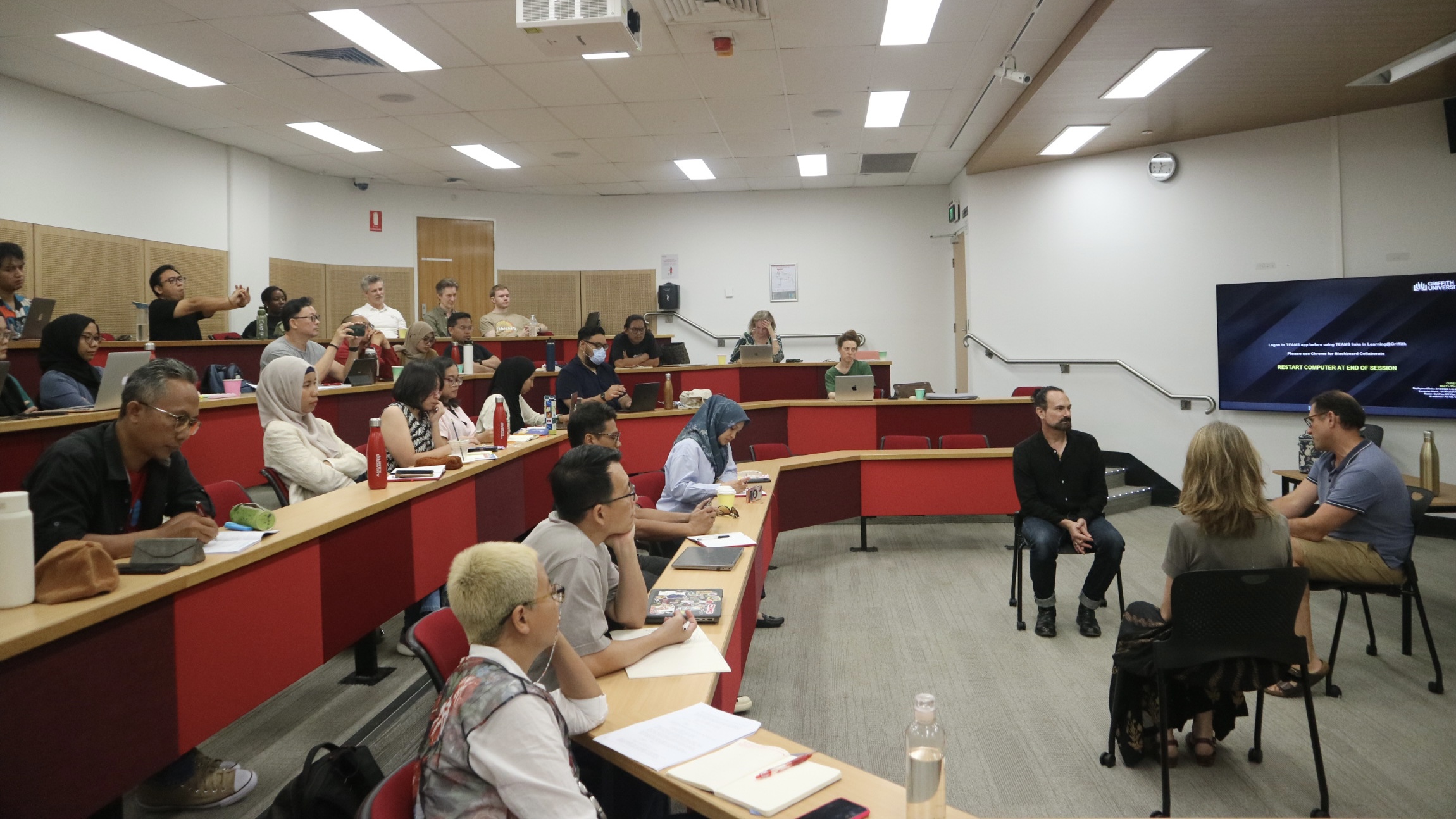Participants, Organizers, and Mentors of the Australian Awards Indonesia Short Course ‘At the Forefront of Film: Screenwriting and Directing’ (Doc. AAI)
“Remember, don’t let your apartment get smoky. If the fire alarm goes off and the firefighters come, you’ll be fined 1,700 dollars!” warned Mommy Rama, the welfare officer of the Australian Awards Indonesia short course I attended: At the Forefront of Film: Screenwriting and Directing. We called her Mommy because she guided us for about two weeks (January 11–26, 2025) during our short course in Brisbane, Australia. Our first day began with this warning so we wouldn’t suffer financial loss, as our stipend was lower than the fine, amounting to 1,300 Australian dollars.
I never imagined that I would be one of the 25 selected participants in this short course, especially after learning that there were 700 applicants. Moreover, I was only representing a small production house that I co-founded with my undergraduate friends, which hadn’t even produced a feature-length film. However, it turned out that experience in large-scale productions was not the determining factor for selection. Instead, what mattered more was the potential to make an impact on the community, no matter how small the scale. These 25 selected participants came from diverse professional backgrounds in the film industry, including screenwriters, directors, producers, and documentary practitioners, representing production houses and film communities from various regions across Indonesia.
Learning Reading Techniques by Interrogating Characters (Doc. AAI)
From Reading to a Post-Production Village Visit
For two weeks in Brisbane, we felt like university students juggling classes and work. During the day, from 9:00 AM to 5:00 PM, we attended lectures; at night, we completed work—most filmmakers are freelancers; and on weekends, we worked on coursework. Some course materials were not new to us, such as film pitching strategies, alternative screenplay development methods beyond The Hero’s Journey, financing plans and production tricks, romantic-comedy filmmaking for teenage female audiences, intimacy coordination in films, and insights into film festivals. However, what was new to us was learning about the Australian film industry, which made us reflect on the precarious nature of filmmaking careers in Indonesia, especially after our session with Screen Queensland, the film investment agency in Queensland, Australia.
Personally, the most memorable lesson was the reading method (script reading) with actors, which involved character interrogation and subtext application. Another highlight was inclusive filmmaking for people with disabilities and marginalized communities, taught by Bus Stop Films, an educational and production institution promoting inclusive filmmaking in Australia. We also learned about film production involving First Nations people—Aboriginal and Torres Strait Islanders—both in storytelling and production processes. Our understanding of First Nations communities was further deepened through a visit to the Jellugral Aboriginal Cultural Centre in Gold Coast.
Another unforgettable experience was our tour of Village Roadshow Studios, a post-production village in Gold Coast that houses various companies specializing in different aspects of post-production, including 3D character creation, color grading, visual effects, animation, and more. I couldn’t help but wonder—when will Indonesia have a post-production village like this?

The Last Day of the Short Course: Participants at the Brisbane Sign (Doc. AAI)
Meeting and Connecting with Other Incredible Participants
Beyond the learning materials, one of the most memorable aspects of this short course was the interaction with fellow participants. As a filmmaker who isn’t obsessed with achievements, it only dawned on me in the second week of the course that my fellow participants were truly outstanding in their fields. Some had their short films screened at the Cannes Film Festival in France, some were winners of Indonesia’s Eagle Awards, one was an actor from the Gadis Kretek series, another was the producer of Samsara, the opening film of JAFF 19, and many more.
However, engaging with them made me realize that their greatness wasn’t solely about these achievements. It was their journey—facing ups and downs in the film industry, their deep passion for their craft, and the personal experiences that inspired their work—that truly defined them. I feel incredibly grateful to have met them and to be part of this journey together as short course participants.

Presenting My Award Project (Doc. Personal Archive of Asmi)
As short course participants, we were required to bring an award project as our learning focus. Most participants worked on film scripts they were developing, ranging from documentaries and short films to feature films. Others planned to adapt the course materials into film workshops in their respective regions, involving communities or institutions they were affiliated with.
I brought a project in the form of a pocketbook on short film story development for film festivals. This project stemmed from my concern about filmmakers’ obsession with getting their films into prestigious festivals to boost their reputation. My project combined practical materials on short film script development with critical reflections on the politics of representation, which I studied during my master’s in Cultural and Media Studies (KBM) at Universitas Gadjah Mada (UGM).
My award project involved autoethnographic research on two short film scripts I had written. Thus, this short course marked my return to the film industry after a two-year career break to focus on my studies at KBM UGM. I hope that this project will not only benefit my production house but also be useful for other filmmakers in developing their short film narratives. As an exploratory medium, I believe that short films hold the potential to be ambivalent spaces—they can simultaneously represent and otherize the subjects they depict.
Contributor: Asmi Nur Aisyah
SDG 4, SDG 5, SDG 17


